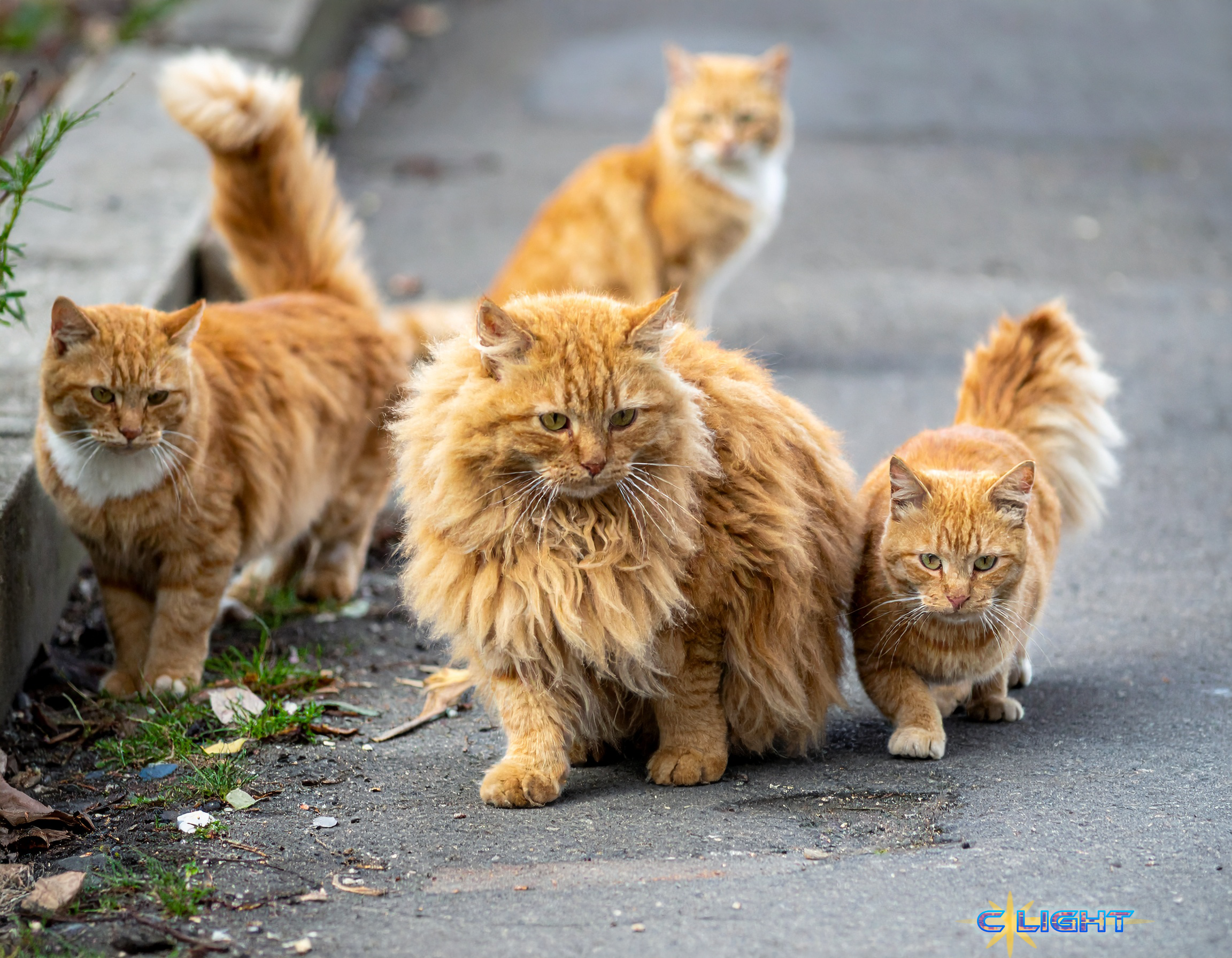There’s a running joke in the feline-loving corners of the internet, a loving slander whispered over countless catnip toys and strategically placed sunbeams: that all orange cats share a single, communal brain cell, and most of the time, it’s not their turn to use it. As the devoted human to a veritable ginger quartet, I can attest that the evidence for this theory is… compellingly anecdotal. Our home is joyfully ruled by Frankie, Solaris, Jack Jack, and Kronk, each a magnificent specimen of orange-ness, each a master of their own particular brand of endearing bafflement.
Their antics certainly fuel the legend. Take Frankie, our “smashed-face, half-blind, wheezer kitty.” Rescued with his brother Solaris at just four weeks because their mother wasn’t feeding them, he survived a harrowing botfly infestation up his tiny nose that, once removed, left the left side of his face caved in and his skull incompletely formed. He’s a testament to resilience, even if his depth perception in our inter-species games of “whack-a-mole” with our black lab/pit mix is, shall we say, creatively timed.
Then there’s Jack Jack, half Maine Coon and, we suspect, half glorious, furry cloud. He is, by a considerable margin, our largest cat and, by an equally considerable margin, the one who seems to misplace the communal brain cell most often. His preferred lounging spots are precarious edges, from which he enjoys rolling onto his back to bat at invisible cosmic wonders, inevitably leading to a dramatic, yet entirely unsurprised, tumble. A lot.
Kronk, by contrast, is one of our smaller oranges, discovered under my van, an apparent stray. Mistaken for a kitten, he was revealed by the vet to be a fully adult three-year-old with an enduring Peter Pan physique and a “defective side” – when anxious, the world becomes his litter box. After a brief, ill-fated adoption attempt where his bathroom anxieties proved too much for another (wonderfully pleasant) family, he returned to us, his favorite sleeping spot now firmly established under my chin.
And Solaris, Frankie’s brother? He’s the stoic, “normal” one, the strong, silent type who secretly craves cuddles and whose fiercest hunting expeditions involve imaginary birds, usually followed by an epic nap. Together, when they engage in their favorite pastime of “chase,” especially with Jack Jack involved, it sounds like a herd of tiny, fluffy buffalo thundering across the floors. And yes, the legends of orange cat solidarity are true: cross one, and you might find yourself facing a coordinated (if slightly clumsy) four-on-one intervention, thankfully usually broken up by our astute canine referees.

So, what is it about these ginger goofballs? Are they, as I’ve often mused, just delightful mutants? Well, according to a fascinating new study from Stanford University, published in Current Biology this month, the answer is a resounding, scientifically-backed YES!
For decades, geneticists knew the orange color in cats was linked to the X chromosome (which is why most fully orange cats are male – they only need one X with the orange gene, while females need two). But the exact “why” and “how” remained a delightful puzzle. Stanford researchers Christopher Kaelin and Greg Barsh, after a decade of Kaelin frequenting cat shows to swab ginger cheeks, have finally cracked it.
They discovered a “really unusual type of mutation”: a tiny deletion of about 5,000 DNA base pairs, not within a gene that controls color (as is typical for fur color), but near a gene called Arhgap36. This gene, involved in a common cell signaling pathway, wasn’t previously known to have anything to do with pigmentation and isn’t normally even active in pigment cells. But here’s the magic: this specific deletion somehow switches Arhgap36 ON in the pigment cells of orange cats. Once activated, Arhgap36 then blocks the production of black pigment, allowing the vibrant orange color to shine through.
What’s even more remarkable is that this exact genetic variant hasn’t been found in any other animal, not even the wild ancestors of our domestic felines. This suggests it was a singular mutation that occurred once, likely during the early days of cat domestication. Humans, presumably as charmed by the golden hue then as we are now, selectively bred for it. The evidence for its antiquity? Depictions of calico cats (who carry this orange gene) in Chinese art date back to the 12th century!

But does this unique genetic quirk, this “mutant” status, explain the legendary orange cat personality – their alleged shared brain cell, their outsized friendliness, their feisty charm? “I think orange cats have really convinced their owners that they’re different,” Kaelin admits, “but they’ve yet to convince us [scientists].” So far, the Stanford team says they have “no reason to think” their genetic findings directly explain these beloved behavioral traits.
So, the delightful mystery of the orange cat’s often endearingly ditzy and affectionate nature persists, for now, beyond the reach of current genetic explanation. But as science continues to unravel the complexities of our feline friends, one thing remains certain: life with these “mutant” marvels, these purring sunbeams, whether they’re meticulously plotting their next (failed) sneak attack on a dust bunny or simply falling off the sofa with majestic bewilderment, is a life filled with an immeasurable amount of fun, laughter, and a very special kind of love. And honestly, who needs more than one brain cell when you’ve got that much charm?
Hmmm… if they’re mutants, that means they need X-MEN COSTUMES!!!
Discover more from Clight Morning Analysis
Subscribe to get the latest posts sent to your email.










